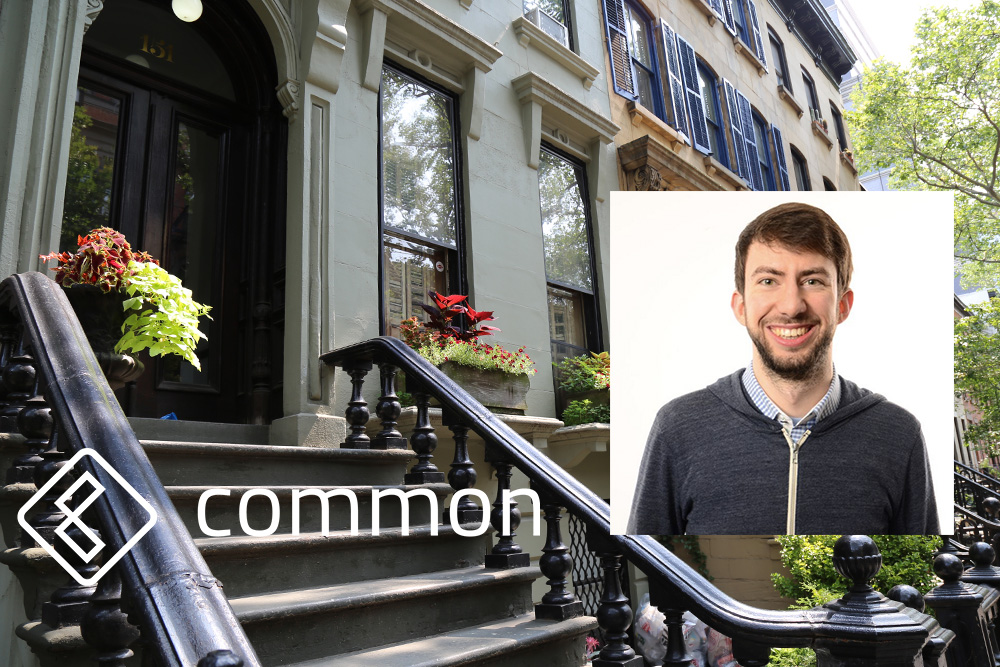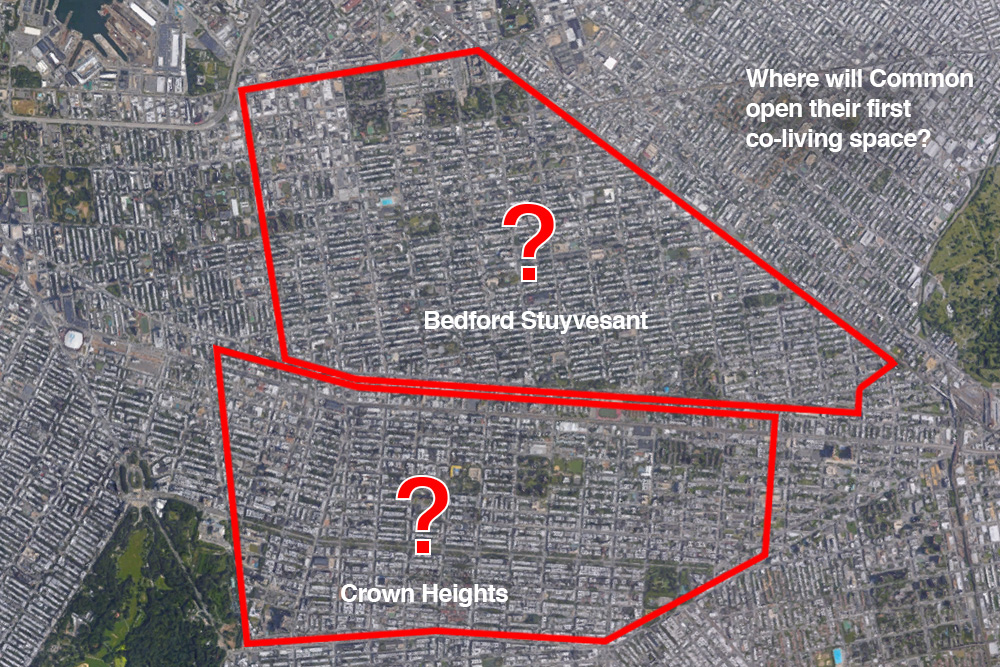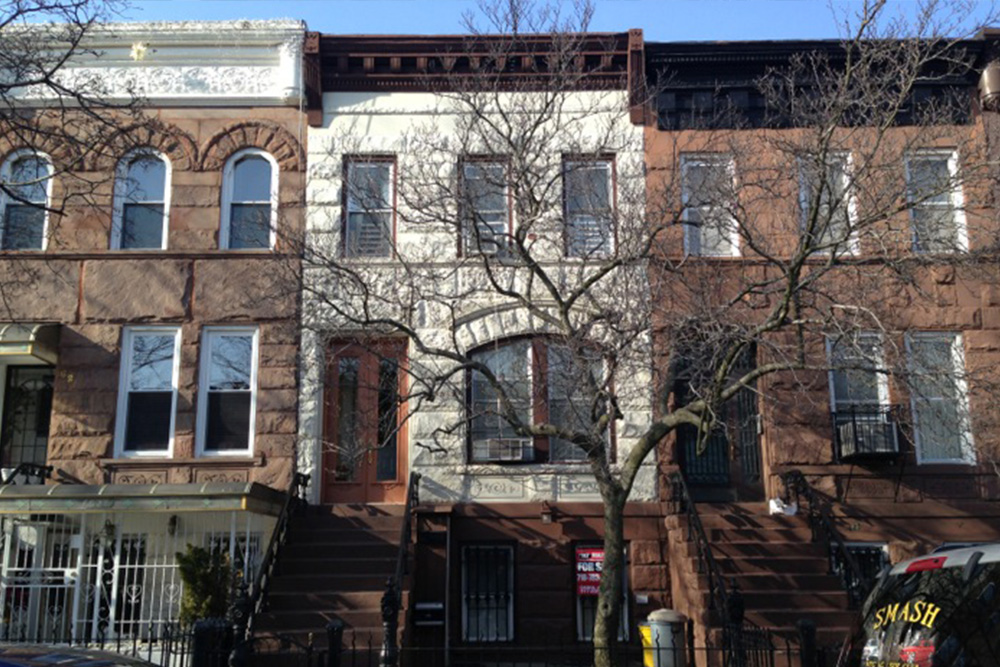Co-living Startup Moving Into Brooklyn Brownstones After Raising $7.35 Million
Co-living is having a moment. Common, the co-living startup founded by General Assembly cofounder Brad Hargreaves announced this morning that they raised $7,350,000 in Series A funding for operating costs and business growth. While shared living arrangements are not new, a successful business model hasn’t yet emerged. Campus, a once-burgeoning co-living company with 30 locations across…

Co-living is having a moment. Common, the co-living startup founded by General Assembly cofounder Brad Hargreaves announced this morning that they raised $7,350,000 in Series A funding for operating costs and business growth.
While shared living arrangements are not new, a successful business model hasn’t yet emerged. Campus, a once-burgeoning co-living company with 30 locations across the country (including one in Park Slope), announced in June that it would close its doors. “[W]e were unable to make Campus into an economically viable business,” says a statement on their website.
But Common’s model is different. The company will cleverly use investor assets — Brooklyn brownstones — through a sharing model.
Partnering directly with real estate investors and developers, Common selects a building on the market and makes a financial case. Then an investor purchases the building on their behalf, leasing it back to Common on a long-term, 10 to 15 year contract.
“Our relationships with our capital partners and investors take some of the short term pressure off of Common and allow us to be a bit more creative and innovative with our use of space,” Hargreaves told Brownstoner. “Taking the entire building means we’re able to see better returns.”
But there’s still risk. The premiums paid for Brooklyn brownstones could make the economics of co-living break down.

While Hargreaves wouldn’t divulge the precise addresses of his first Common locations, he indicated to Brownstoner that there would be more than one Brooklyn co-living space launching in the fall, and that the company was focusing on Bed Stuy and Crown Heights — and brownstones.
Classic Brooklyn brownstones “work exceptionally well for this model of individuals living together, for creating a community,” Hargreaves told us.”Both [neighborhoods] have great access to transit, and great communities already there. We’re looking to create spaces that integrate and interact with their neighborhoods.”
Common offers an alternative housing option to those who want to live in a Brooklyn brownstone — without subletting, finding roommates on Craigslist, or signing a year lease.
Living at Common will cost somewhere between $1,000 and $2,000 a month, including utilities, management fees, WiFi, cleaning service, and supplies like coffee, tea, and paper towels.
Hargreaves described how in one building, they are creating an open community space on the lowest floor with a giant dining table so that occupants can all have dinner together. He continued, “We’re using existing configurations as best as we can, with slight modifications to get people interacting.”
When asked why Common was starting in Brooklyn, Hargreaves said that the borough had everything they were looking for: the right mix of affordability, transit, and inventory.
Perhaps Brooklyn is its own kind of Silicon Valley. Not an incubator for technology, necessarily, but an incubator for something more akin to lifestyle: live in a Common house in Crown Heights, work in a WeWork office in Dumbo Heights, take an Uber or a Car2Go out to an evening’s adventure in Williamsburg — a proving ground for the future?
Related Stories
Five Rentals for Roommates (That Are Cheaper Than Co-Living)
WeWork Plans Huge Building for Brooklyn Navy Yard, to Add 4,000 Workers
Greendesk Coworking Space Gets an Addition in Downtown Brooklyn






Park Slope has the most highest rent in Brooklyn. And if you are not Skip and Becky, they won’t rent to you. Now everyone is complaining about the high rents in Crown Heights and Bed Stuy as if they’re being had. It’s capitalism
Hey…Are you BeetleJuice from the Howard Stern show
Then go live in one of the many new construction rentals popping up.
jeez, enough with the stereotypes here. first someone says this is “SRO’s for whites”, now you say “let them spend their parents money”. Why is the assumption that this is a stupid idea that only “whites” will buy into or that only people who live off their parents would spend between $1-$2k on housing? We’re talking about whether this is a viable business model and everyone is entitled to their own opinion but stop making generalizations. It says above Common believes they have an advantage because their model will work with investors to buy a building, so while other companies would go to existing homes/building and essentially buy leases and are subject to what those existing landlords want, Common is either buying the building themselves or with an investor. If I’m black, hispanic, white whatever and have a job where I can afford up to $2k in rent and plan to be in NY an unknown amt of time, how is this not a good model? Is it the best, is it the smartest..maybe not. But part of an intelligent conversation is talking numbers not turning this into a possible gentrification convo. Look at the success of co-working spaces like We Works that owns the buildings or floors they operate in, similar model than what Common is proposing. Many small businesses work out of places like this because they either don’t want to or don’t have the money upfront to get their own office or don’t want to commit to a lease. So they spend MORE per month to rent a few desks when over the long term they’re probably better off getting their own lease. Similar thing applies here.
Every real estate idea is not always a good one. Let them spend their parents money sharing rooms while I continue to OWN the entire building. Sounds ridiculous to me, but then, people are free to do whatever they like.
is this actually that unbelievable though? i rent the top floor (1.5 bedroom) in bed stuy for $2,100. it required a brokers fee, one year commitment, first months, last months and security deposit. tenant pays utilities, etc separately and on top of that they have to deal with the charms of living in an old house. for people that don’t want to deal with any of the above, up to $2k a month isn’t a lot of money to live in a new renovated space and have all costs covered, especially if they are transient and expect to be in NY for less than a year. people will pay a premium for the flexibility to move, not put out money upfront to commit to a lease and not have to deal with annoying things like buying toilet paper and cleaning.
Isn’t most of NY real estate based on the premise of convincing millennials to overpay for things? Pretty sure it’s working out great.
The other company went bankrupt right quick – why would this business model be any different/successful? It’s still the same dumb concept – a property management company that charges no management fee, investors who have ZERO reason to hope the company is successful (in the end, they still own the property), and clients who the company hopes to God don’t realize they are being price-gouged.
The company has to survive on the profits of somehow convincing millennials to overpay for SROs, so they must invest in other “amenities” that cost money. It’s a moronic business model.
who says it’s a sister company? it’s not the same founder or investors. same concept but i’m assuming they’ve explored similar models in other cities and have a grasp on what works and what doesn’t.